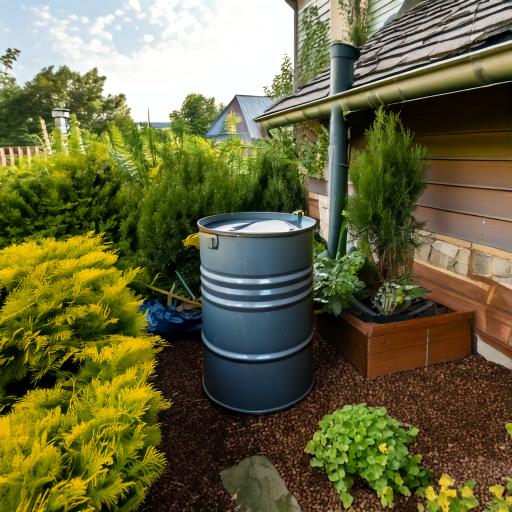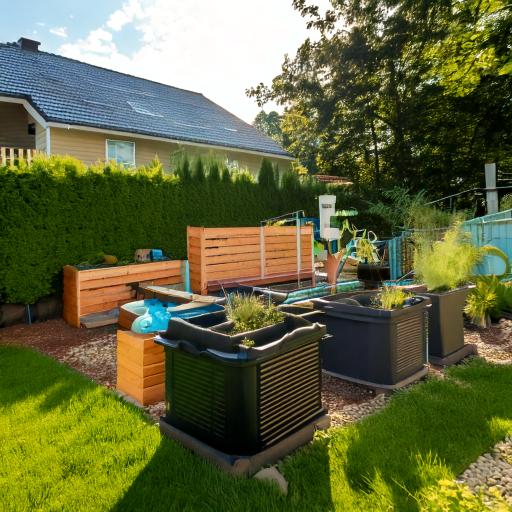How to Harness Rainwater: The Key to Sustainable Living
Water conservation is more critical than ever, and learning how to harness rainwater is a step toward a more sustainable future. By collecting and utilizing rainwater, you can reduce water waste, lower your bills, and create a more eco-friendly lifestyle. This guide will show you how to harness rainwater effectively and integrate it into your daily routine.

How to Harness Rainwater for a Greener Future
Understanding how to harness rainwater is essential for anyone looking to live more sustainably. By collecting and using rainwater wisely, you can contribute to water conservation efforts and ensure a more resilient water supply.
What Does It Mean to Harness Rainwater?
Before diving into how to harness rainwater, let’s clarify what it means.
- Definition: The process of collecting, storing, and using rainwater for daily activities.
- Uses: Rainwater can be utilized for irrigation, cleaning, and even drinking when properly filtered.
- Benefits: Reducing reliance on municipal water and minimizing water wastage.
Learning how to harness rainwater can make a significant impact on sustainability.
The Benefits of Harnessing Rainwater
Understanding how to harness rainwater goes beyond just collecting it—it’s about using it effectively. Here’s why it matters:
Reducing Water Bills
- Using harvested rainwater for irrigation and household tasks lowers water consumption.
- Households that know how to harness rainwater save money annually on water costs.
Conserving a Precious Resource
- Every drop saved through how to harness rainwater reduces pressure on local water systems.
- Beneficial in drought-prone regions where water shortages are common.
Preventing Flooding & Soil Erosion
- Capturing rain minimizes runoff, preventing excess water from damaging landscapes.
- Understanding how to harness rainwater can improve urban and rural water management.
Eco-Friendly Landscaping
- Rainwater is free from chlorine, making it ideal for nurturing plants.
- Those who master how to harness rainwater can maintain healthier gardens.

Step-by-Step Guide on How to Harness Rainwater
If you’re ready to start, follow these essential steps on how to harness rainwater efficiently.
Install a Rain Barrel
- The easiest way to begin learning how to harness rainwater is by setting up a rain barrel.
- Place it under a gutter downspout to collect water efficiently.
Build a Storage Tank for Larger-Scale Collection
- If you need more water, investing in a storage tank is the next step in how to harness rainwater.
- Larger tanks allow for long-term water storage with filtration systems.
Optimize Collection Locations
- Place collection systems where water runoff is highest, such as under a sloped roof.
- This ensures that learning how to harness rainwater leads to maximum efficiency.
Add Filters and Diverters
- Prevent debris and contaminants from entering the water system.
- A key part of how to harness rainwater safely is using high-quality filtration.
Maintain the System Regularly
- Clean gutters, barrels, and filters to ensure long-term success.
- Regular maintenance is crucial in learning how to harness rainwater effectively.
Everyday Uses for Harvested Rainwater
Once you understand how to harness rainwater, you can integrate it into daily life.
Watering Your Garden
- Harvested rainwater is perfect for irrigation and helps plants thrive.
- A primary reason people learn how to harness rainwater is for gardening purposes.
Cleaning & Household Chores
- Use rainwater to clean patios, cars, and outdoor furniture.
- Those who know how to harness rainwater can cut down on household water use.
Toilet Flushing
- With proper filtration, rainwater can supply non-drinking water needs.
- A great way to implement how to harness rainwater inside your home.
Laundry & Washing Clothes
- Treated rainwater can replace tap water for washing machines.
- Many people interested in how to harness rainwater use it for household chores.
Emergency Water Storage
- Keeping filtered rainwater as a backup ensures preparedness.
- A valuable aspect of how to harness rainwater for long-term sustainability.
Challenges & Solutions in Harnessing Rainwater
Although learning how to harness rainwater is beneficial, some obstacles exist.
Legal Restrictions
- Some regions regulate rainwater collection—always check local laws.
- Before setting up a system, research how regulations affect how to harness rainwater in your area.
Contamination Risks
- Using high-quality filters is essential for safe rainwater use.
- A vital part of understanding how to harness rainwater is knowing proper treatment methods.
Limited Storage Space
- If you lack space, consider multiple small barrels instead of large tanks.
- Adapting to different environments is key in mastering how to harness rainwater.
How to Harness Rainwater for Long-Term Sustainability
Once you’ve mastered the basics, here are additional tips on how to harness rainwater efficiently.
- Use UV filtration for drinkable rainwater.
- Monitor weather patterns to optimize collection efforts.
- Implement smart irrigation systems to use rainwater wisely.
By refining your approach, you can make how to harness rainwater a lifelong practice.
Final Thoughts on How to Harness Rainwater
By taking the initiative to learn how to harness rainwater, you’re making a meaningful contribution to water conservation. Whether you start with a simple rain barrel or invest in a full-scale system, every drop counts.
Begin your journey today and discover how to harness rainwater to create a more self-sufficient, sustainable future!










